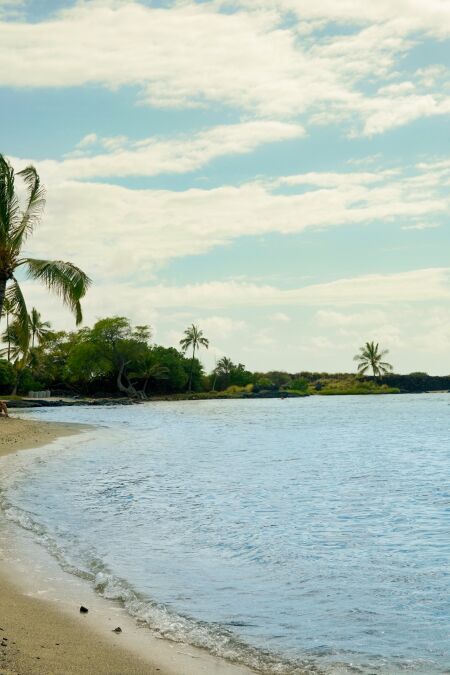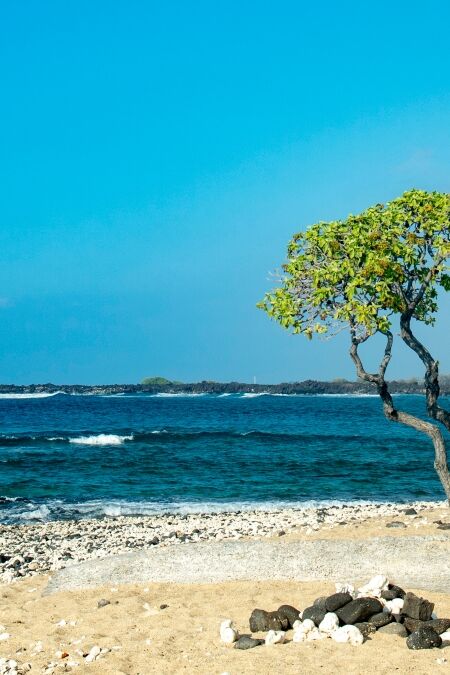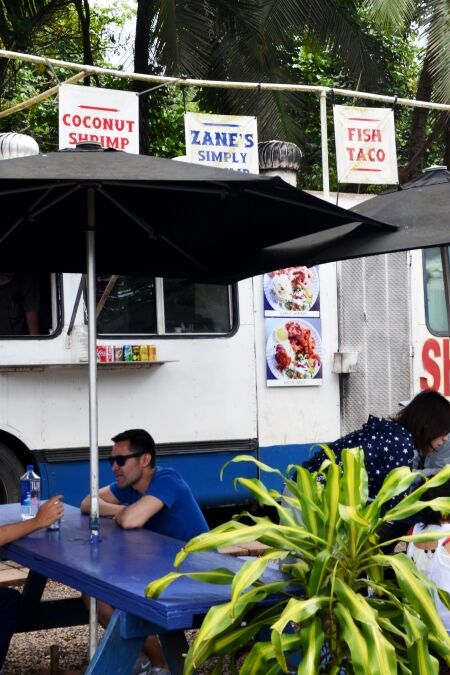Kalae, also known as South Point, is the southernmost point of the United States, steeped in rich Hawaiian culture and history. This remote and rugged location offers visitors breathtaking coastal views, ancient archaeological sites, and a sense of untouched natural beauty. In this travel guide, we’ll explore the significance of Kalae in Hawaiian traditions, its striking landscapes, and the activities that make it a must-visit destination on the Big Island.
Highlights
- Enjoy breathtaking views of the Pacific Ocean from the rugged cliffs of Kalae. The dramatic coastline and deep blue waters create a stunning backdrop for photos and quiet contemplation.
- For thrill-seekers, Kalae offers the opportunity to experience cliff diving into the ocean.
- The area is popular for shore fishing, and the rocky coastline provides ample opportunities for those interested in exploring tide pools or simply enjoying a coastal walk.
- The landscape is dotted with iconic windmills, adding a distinctive feature to the horizon.
History
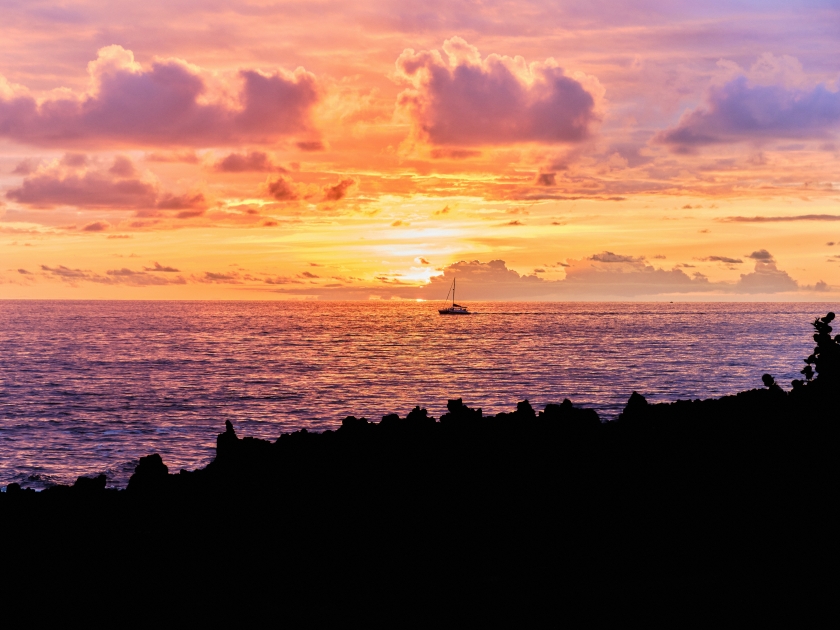
A Gateway to the Islands
Ka Lae, often recognized as one of the earliest landing sites for Polynesian settlers in Hawaii, holds a deep connection to the island’s ancient past. The region is home to numerous archaeological sites, including heiau (temples) and fishing shrines, which offer a fascinating glimpse into the lives and practices of early Hawaiians. These sites serve as tangible links to the past, revealing the spiritual and practical aspects of life for the first settlers.
The First Landfall and Archaeological Riches
Located near Tahiti, Ka Lae is believed to have been a prime landing point for the first Polynesian voyagers. This connection is supported by the abundance of archaeological treasures found in the area, including stone tools, fishhooks, and remnants of ancient structures. These artifacts not only highlight the area’s historical importance but also underscore its cultural significance, as many Hawaiian legends and stories are intricately tied to Ka Lae, making it a key location in Hawaiian mythology and folklore.
Modern-Day Ka Lae
Today, Ka Lae continues to be a place of reverence and historical importance, while also attracting visitors eager to experience the raw beauty of Hawaii’s southern coast. The area offers a range of activities for modern-day explorers, from hiking along rugged trails to fishing in abundant waters. Additionally, the nearby Papakolea Green Sand Beach, a rare natural wonder, provides an unforgettable experience for those who venture to this historically rich and visually stunning location.
Natural Features and Attractions
Scenic Views
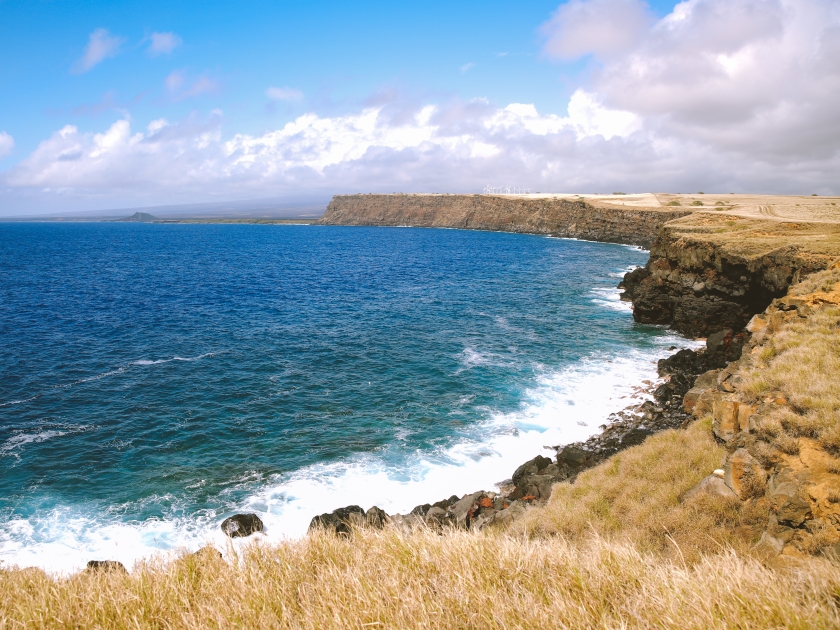
Kalae offers some of the most stunning coastal views on the Big Island, with dramatic cliffs plunging into the deep blue ocean and a landscape shaped by ancient volcanic activity. The rugged coastline and sweeping vistas create a unique and awe-inspiring backdrop that captivates visitors, making it a perfect spot for photography and simply soaking in the natural beauty.
Green Sand Beach (Papakolea Beach)
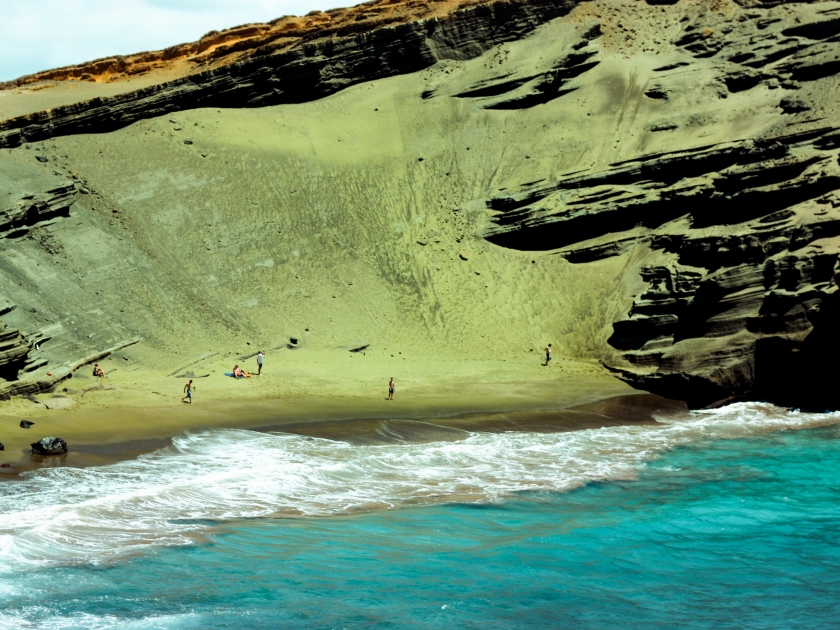
Just a short hike from Kalae lies Green Sand Beach, one of only four beaches in the world with unique olivine sand that gives it its distinctive green hue. This secluded beach is a natural wonder, accessible by a moderately challenging hike or a 4WD vehicle. Visiting this rare beach is a highlight for many travelers to the area, offering a one-of-a-kind experience.
Things to Do
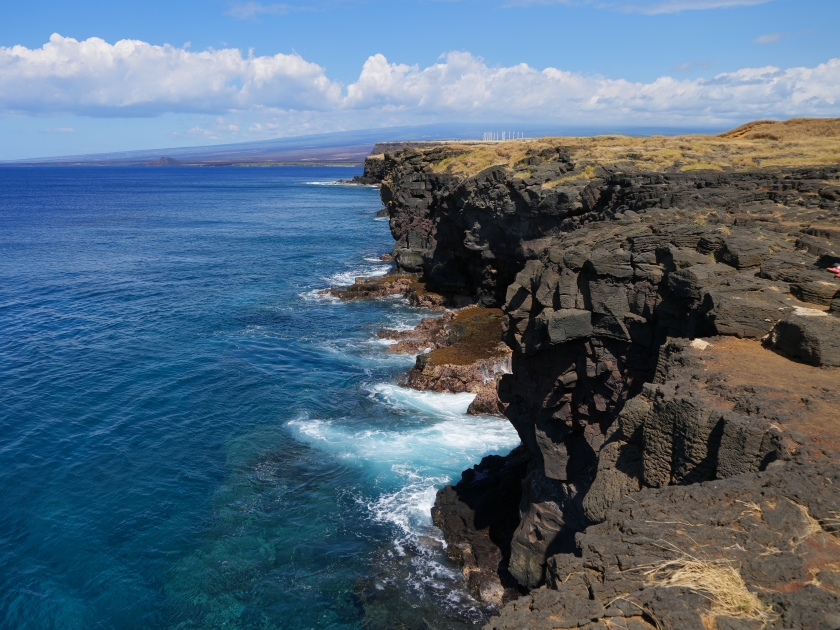
Cliff Diving
Cliff diving at South Point is a thrilling activity for adventurous visitors, with several spots offering plunges into the crystal-clear waters below. Known for its deep waters and strong currents, it’s essential to take safety precautions, such as checking the conditions and ensuring you’re diving from designated spots. The rush of diving from the cliffs into the ocean is an exhilarating experience that draws thrill-seekers from around the world.
Fishing
Kalae is a popular spot for both traditional and modern fishing practices, with its rich waters offering an abundance of fish. Local anglers often use ancient Hawaiian fishing techniques, such as handlining, while others prefer more contemporary methods. The area’s strong currents and deep waters make it an exciting location for experienced fishermen, with South Point itself being one of the most sought-after fishing spots on the island.
Hiking
The hiking trails around Kalae offer a range of experiences, from easy coastal walks to more challenging treks. One popular hike is the trail to Green Sand Beach, a moderate 2.5-mile trek that rewards hikers with stunning views and a visit to the unique olivine sands. Other trails in the area provide opportunities to explore the rugged terrain, with breathtaking ocean vistas and a chance to see the island’s natural beauty up close.
Cultural Tours
Guided cultural tours of Kalae offer visitors an in-depth look at the area’s rich history and significance in Hawaiian culture. These tours often include visits to ancient archaeological sites, such as heiau (temples) and stone markers, and provide insights into the traditional practices of the early Hawaiian settlers. Through these tours, visitors gain a deeper appreciation for Kalae’s cultural heritage and its importance to the island’s history.
Tips for Visiting
- Prepare for Windy Conditions: Kalae is known for strong winds, so dress accordingly in layers and secure hats and belongings.
- Bring Sufficient Water and Snacks: The area is remote, and there are no nearby facilities, so pack enough supplies for your visit.
- Use a 4WD Vehicle for Green Sand Beach: If planning to visit Green Sand Beach, consider using a 4WD vehicle or be prepared for a moderate hike.
- Respect Cultural Sites: Observe and respect any marked cultural or archaeological sites; avoid touching or disturbing them.
- Check Weather Conditions: Before cliff diving or hiking, ensure the weather and ocean conditions are safe.
- Plan for Limited Cell Service: Cell service can be spotty in the area, so plan your route and activities.
- Leave No Trace: Pack out all trash and belongings to preserve the natural beauty and integrity of the site.
Best Times to Visit
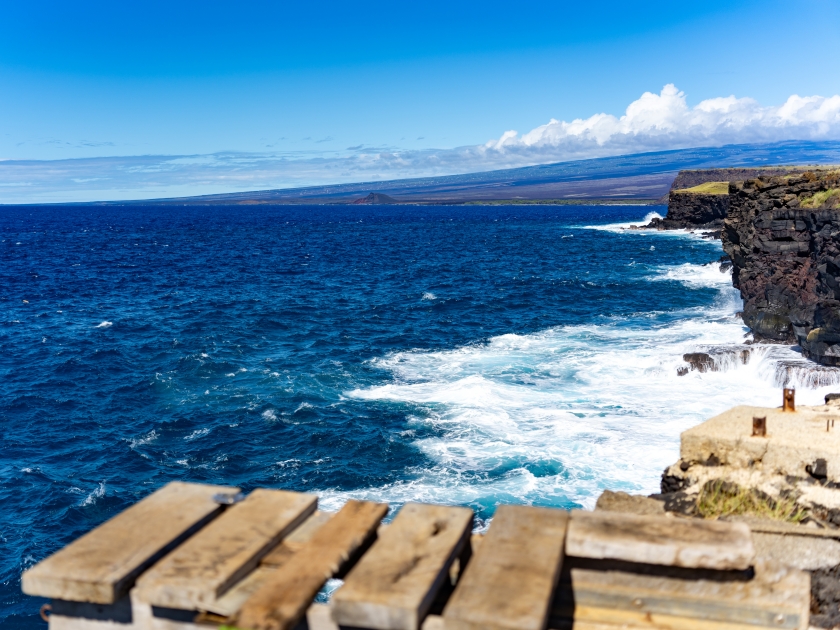
The best times to visit Kalae are during the dry season from May to September when the weather is generally more stable, offering clearer skies and calmer conditions for hiking, fishing, and exploring the area. Visiting in the early morning or late afternoon can also provide cooler temperatures and fewer crowds, allowing for a more peaceful and enjoyable experience at this remote location.
Where to Stay
For those planning to stay near Kalae, there are a few charming accommodation options to consider. Pele’s Eye offers a unique, off-grid experience with stunning ocean views, perfect for those seeking solitude and connection with nature. Green Sands Oasis provides comfortable vacation rentals just a short drive from the Green Sand Beach trailhead, ideal for adventurers. Kalaekilohana Inn & Retreat is a boutique inn offering luxurious accommodations with a focus on Hawaiian culture and hospitality. While there are no official camping sites at Kalae, the nearby areas allow for dispersed camping, but visitors should be prepared with their gear and follow leave-no-trace principles.
Frequently Asked Questions (FAQs)
Kalae, also known as South Point, is the southernmost point in the United States, renowned for its dramatic cliffs and ancient Hawaiian history.
Yes, Kalae is open to visitors and offers stunning views, unique historical sites, and opportunities for fishing and hiking.
Kalae holds cultural significance as one of the oldest settled areas in Hawaii, with archaeological sites and ancient trails reflecting its rich history.
Visitors to Kalae can enjoy hiking, fishing, and exploring ancient Hawaiian archaeological sites along with breathtaking ocean views.
Yes, Kalae is a popular fishing spot, particularly for shore casting, due to its deep waters and abundance of fish.
The weather at Kalae is typically windy with mild temperatures, making it a refreshing spot to visit year-round.
How to Get There
By Car
To reach Kalae by car, take Highway 450 heading south. Follow the scenic coastline until you see the signs for Kalae. The drive is approximately 30 minutes from the nearest town, offering beautiful views along the way. Ensure you have a map or GPS handy, as some areas may have limited signage.
By Bus
If you prefer public transportation, check the local bus schedule that includes routes to Kalae. Buses typically depart from the main transit hub in the nearby city several times a day. The journey may take around 45 minutes, so be sure to plan your trip accordingly and arrive at the bus stop a few minutes early. Additionally, confirm the latest timetable as it may vary on weekends or holidays.
Go Where the Ends Meet the Heart of Hawaii
Kalae is a journey into the soul of Hawaii. With its dramatic cliffs, ancient history, and unparalleled natural beauty, Kalae offers a unique blend of adventure and cultural discovery. Whether you’re diving into its deep blue waters or simply soaking in the panoramic views, Kalae promises an experience that leaves a lasting impression. Don’t miss the chance to explore this remote and captivating destination on your next visit to the Big Island.


